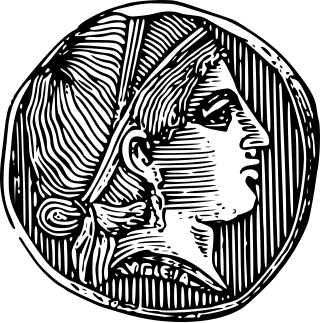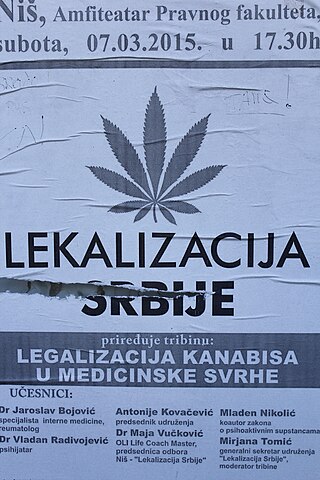The expression International Opium Convention refers either to the first International Opium Convention signed at The Hague in 1912, or to the second International Opium Convention signed at Geneva in 1925.
| International Opium Convention signed at The Hague, January 23rd, 1912, and Protocols of cloture signed at The Hague on January 23rd, 1912; July 9th, 1913; and June 25th, 1914. | |
|---|---|
| Signed | 23 January 1912 [1] |
| Location | The Hague |
| Effective | 28 June 1919 [2] |
| Expiration | 13 December 1964 [3] |
In 1909, a 13-nation International Opium Commission was held in Shanghai, in response to increasing criticism of the opium trade and to the Opium Wars. A few years later, in 1912, the First International Opium Conference was convened in The Hague to continue the discussions initiated in Shanghai.
The International Opium Convention (or 1912 Opium Convention) which was signed at the end of the Hague Conference, on 23 January 1912, is considered as the first international drug control treaty. It was registered in League of Nations Treaty Series on January 23, 1922. [4] The treaty was signed by Germany, the United States, China, France, the United Kingdom, Italy, Japan, the Netherlands, Persia, Portugal, Russia, and Siam. The convention provided, "The contracting Powers shall use their best endeavours to control, or to cause to be controlled, all persons manufacturing, importing, selling, distributing, and exporting morphine, cocaine, and their respective salts, as well as the buildings in which these persons carry such an industry or trade."
The convention was implemented in 1915 by the United States, Netherlands, China, Honduras, and Norway. It went into force globally in 1919, when it was incorporated into the Treaty of Versailles. The primary objective of the convention was to introduce restrictions on exports; it did not entail any prohibition or criminalisation of the uses and cultivation of opium poppy, the coca plant, or cannabis.
| International Convention, Adopted by the Second Opium Conference (League of Nations), and Protocol relating thereto. Signed at Geneva, February j9, 1925. | |
|---|---|
| Signed | 19 February 1925 [5] |
| Location | The Hague |
| Expiration | 13 December 1964 [6] |
In 1925, a Second International Opium Conference was convened in Geneva. On this occasion, a second International Opium Convention (the International Convention relating to Dangerous Drugs or 1925 Opium Convention) was signed at Geneva on 19 February 1925. It went into effect on 25 September 1928, and was registered in League of Nations Treaty Series on the same day. [7] [8] It introduced a statistical control system to be supervised by a Permanent Central Opium Board, a body partly linked to the League of Nations.
The 1925 Convention provided for the setting up of a Permanent Central Opium Board (PCOB). It started operating in 1928. Although a treaty-mandated body, theoretically independent from the League of Nations, it became partially-integrated into the structure of the League. [9] [10]
The PCOB was first known as the Permanent Central Opium Board, then as the Permanent Central Narcotics Board. It is sometimes referred to as Permanent Central Board. [11]
In 1931 the Board was supplemented by the creation of another organ under the "Limitation Convention": the Drug Supervisory Body ("Organe de Contrôle") which, together with the PCOB, was eventually merged onto the International Narcotics Control Board in 1968.
Egypt, with support from Italy and South Africa, recommended that measures of control be extended beyond opium and cocaine derivatives, to hashish. A sub-committee was created, and proposed the following text:
The use of Indian hemp and the preparations derived therefrom may only be authorized for medical and scientific purposes. The raw resin (charas), however, which is extracted from the female tops of the cannabis sativa L, together with the various preparations (hashish, chira, esrar, diamba, etc.) of which it forms the basis, not being at present utilized for medical purposes and only being susceptible of utilisation for harmful purposes, in the same manner as other narcotics, may not be produced, sold, traded in, etc., under any circumstances whatsoever.
India and other countries objected to this language, citing social and religious customs and the prevalence of wild-growing cannabis plants that would make it difficult to enforce. A compromise [12] was made that banned exportation of Indian hemp to countries that have prohibited its use, and requiring importing countries to issue certificates approving the importation and stating that the shipment was required "exclusively for medical or scientific purposes." It also required Parties to "exercise an effective control of such a nature as to prevent the illicit international traffic in Indian hemp and especially in the resin." These restrictions still left considerable leeway for countries to allow production, internal trade, and use of cannabis for recreational purposes. [13]
After the second world war, the two Opium Conventions were amended to transfer the mandates and functions of the League of Nations and the Office international d'hygiène publique to the United Nations and World Health Organization. [14] Eventually, both the 1912 and the 1925 Conventions were superseded by the 1961 Single Convention on Narcotic Drugs which merged the Permanent Central Opium Board and the Drug Supervisory Body onto the INCB.

The term narcotic originally referred medically to any psychoactive compound with numbing or paralyzing properties. In the United States, it has since become associated with opiates and opioids, commonly morphine and heroin, as well as derivatives of many of the compounds found within raw opium latex. The primary three are morphine, codeine, and thebaine.

The prohibition of drugs through sumptuary legislation or religious law is a common means of attempting to prevent the recreational use of certain intoxicating substances.

The Single Convention on Narcotic Drugs, 1961 is an international treaty that controls activities of specific narcotic drugs and lays down a system of regulations for their medical and scientific uses; it also establishes the International Narcotics Control Board.
The International Narcotics Control Board (INCB) is an independent treaty body, one of the four treaty-mandated bodies under international drug control law.

The United Nations Convention Against Illicit Traffic in Narcotic Drugs and Psychotropic Substances of 1988 is one of three major drug control treaties currently in force. It provides additional legal mechanisms for enforcing the 1961 Single Convention on Narcotic Drugs and the 1971 Convention on Psychotropic Substances. The Convention entered into force on November 11, 1990. As of June 2020, there are 191 Parties to the Convention. These include 186 out of 193 United Nations member states and the Holy See, the European Union, the Cook Islands, Niue, and the State of Palestine.

The Commission on Narcotic Drugs (CND) is one of the functional commissions of the United Nations' Economic and Social Council (ECOSOC), and is the central drug policy-making body within the United Nations System. The CND also has important mandates under the three international drug control conventions, alongside the three other treaty-mandated bodies: United Nations Office on Drugs and Crime, World Health Organization, and International Narcotics Control Board.
The Convention for Limiting the Manufacture and Regulating the Distribution of Narcotic Drugs was a drug control treaty promulgated in Geneva on 13 July 1931 that entered into force on 9 July 1933.
The 1972 Protocol amending the Single Convention on Narcotic Drugs was a protocol that made several changes to the Single Convention on Narcotic Drugs. It highlighted the need for treatment and rehabilitation of drug addicts, instructing parties to take "all practicable measures for the prevention of abuse of psychotropic substances and for the early identification, treatment, education, after-care, rehabilitation, and social reintegration of the persons involved". It also expanded the International Narcotics Control Board from 11 members to 13 members.

The Protocol Amending the Agreements, Conventions and Protocols on Narcotic Drugs concluded at The Hague on 23 January 1912, at Geneva on 11 February 1925 and 19 February 1925, and 13 July 1931, at Bangkok on 27 November 1931 and at Geneva on 26 June 1936 was a treaty, signed on 11 December 1946 at Lake Success, that shifted the drug control functions previously assigned to the League of Nations to the United Nations. As the Protocol's official title says, it modifies the provisions of the:
Adolf Lande (1905–197?) served for many years as secretary of the Permanent Central Narcotics Board and the Drug Supervisory Body and was the primary drafter of the Single Convention on Narcotic Drugs. He also wrote the Commentary of both the Single Convention and the Convention on Psychotropic Substances. These documents are crucial to the interpretation of the treaties. Lande was considered one of the most foremost authorities on UN international drug control legislation.
A drug policy is the policy regarding the control and regulation of psychoactive substances, particularly those that are addictive or cause physical and mental dependence. While drug policies are generally implemented by governments, entities at all levels may have specific policies related to drugs.

The International Office of Public Hygiene (OIPH), also known by its French name as the Office International d'Hygiène Publique (OIHP), was an international organization founded 9 December 1907 and based in Paris, France. It merged into the World Health Organization after World War II.

The Convention on Psychotropic Substances of 1971 is a United Nations treaty designed to control psychoactive drugs such as amphetamine-type stimulants, barbiturates, benzodiazepines, and psychedelics signed in Vienna, Austria on 21 February 1971. The Single Convention on Narcotic Drugs of 1961 did not ban the many newly discovered psychotropics, since its scope was limited to drugs with cannabis, coca and opium-like effects.
The major drug laws of India are the Narcotic Drugs and Psychotropic Substances Act (1985) and the Prevention of Illicit Trafficking in Narcotic Drugs and Psychotropic Substances Act (1988).

Cannabis is illegal in Indonesia. Cannabis plants, all plants of the Cannabis genus and all parts of plants including seeds, fruit, straw, and processed cannabis plants or parts of cannabis plants including marijuana resin and hash are categorized as narcotics group. Drug offenders are subject to a minimum sentence of four years in prison if caught possessing it. Derivatives of medical and recreational cannabis are also illegal.
Cannabis in Latvia is illegal for recreational and medical purposes, but production of industrial hemp is permitted.

The status of cannabis in international law is a century-old history. Cannabis reform at the international level refers, in the 20th century, to efforts to increase restrictions on cannabis use under international treaties; in the 21st century, generally to efforts to ease or update such restrictions.
The Cannabis Control Law of Japan, aka 1948 Law No. 124, is the national law of Japan concerning cannabis possession, cultivation, and transfer.

For Alternative Approaches to Addiction, Think & do tank is an international non-profit organization working on drug policy, created in 2015 and based in Paris, France.
The removal of cannabis and cannabis resin from Schedule IV of the Single Convention on narcotic drugs, 1961 is a change in international law that took place in 2021, on the basis of a scientific assessment by the World Health Organization.
{{cite web}}: CS1 maint: DOI inactive as of January 2024 (link)